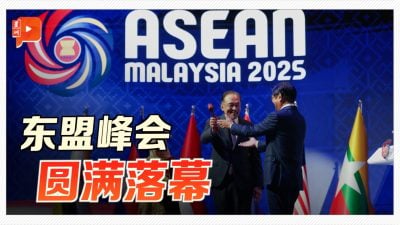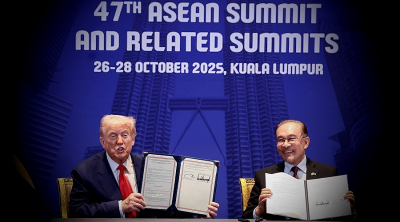
On January 1, 2022, the Regional Comprehensive Economic Partnership (RCEP) Agreement finally went into effect.
RCEP is the first mega FTA covering the broad East Asia region that includes Asean, and represents the world’s largest FTA, accounting for about 30% of GDP, population and trade of the world.
RCEP is made up of 15 member countries in East Asia, namely the ten member states of Asean along with Japan, China, South Korea, Australia and New Zealand.
RCEP was proposed and negotiated over by Asean in 2011. It took time for negotiations over RCEP to reach an agreement thereafter, and India pulled out of negotiations part-way through, but faced with protectionism, the US-China conflict and the spread of COVID-19, the agreement was signed by 15 countries in November 2020.
In January 2022, the agreement went into effect in ten of the 15 countries (Brunei, Cambodia, Laos, Singapore, Thailand, Vietnam, Australia, Japan and China). This was followed by South Korea on February 1 and Malaysia on March 18. The agreement was ratified by Indonesia on August 30, and is expected to enter into force in December.
The RCEP Agreement is made up of 20 chapters in all, covering many topics including trade liberalization and many rules.
Looking at the content of the RCEP Agreement, in many areas it surpasses the multiple Asean+1 FTAs that have been previously established.
RCEP has great significance for the world and East Asia. It represents the first mega FTA in the world growth center, East Asia, and is also the world’s largest FTA.
RCEP members account for about 30% of global GDP, population and trade, and those figures are still growing.
It is a mega FTA that covers the entirety of multiple Asean+1 FTAs that have been established to date.
In addition, the RCEP agreement results in Japan-China and Japan-Korea FTAs which have never before existed.
The overall tariff elimination rate for RCEP member nations will eventually reach 91% on an item basis.
Rule of origin provisions are also easier for companies to use compared with previous Asean+1 FTAs.
RCEP members account for about 30% of global GDP, population and trade, and those figures are still growing.
RCEP will have a significant economic impact on East Asia.
Firstly, it will promote trade and investment in goods and services throughout East Asia, contributing even further to the economic development of East Asia as a whole.
Secondly, it will facilitate the development of new rules such as intellectual property and e-commerce.
Thirdly, it will improve the production networks and supply chains in East Asia.
And lastly, it will help to narrow the economic gaps between advanced and developing countries within the region.
RCEP is expected to counter growing protectionism and also promote the liberalization of trade and investment and the establishment of trade rules. RCEP will also have to coordinate with CPTPP and other mega FTAs. RCEP and IPEF could also be complementary.
For Asean, the RCEP it proposed itself has been achieved. It will be more important that Asean continues to ensure the initiative and centrality in RCEP.
The regional cooperation and economic integration of East Asia is balanced out by Asean playing a central role amid China’s expanding presence.
While deepening its own economic integration, Asean must maintain its unity as a body while also dealing with the Myanmar issue.
Malaysia also has a major role to play in Asean as an original member.
RCEP is also significant for Japan. To Japan, trade with RCEP members accounts for around half of total trade, and RCEP is also the most compatible with the production networks of Japanese companies.
It also represents the first Japan-China and Japan-Korea FTAs, resulting in the elimination of many tariffs between Japan and China, and Japan and Korea.
To China, which is dealing with trade friction and confrontation with the United States, there were expectations for participation in RCEP and its early entry into force. Additionally, for Asean and various countries in East Asia, including China in the framework of trade rules is seen as important for the future trade system in East Asia.
After going into effect, actual use of RCEP by companies has expanded rapidly. For example, the number of RCEP certificates of origin issued by the Japan Chamber of Commerce and Industry (indicating the use of RCEP by companies) increased rapidly from 671 in January to 9,132 in June. Usage in China and Thailand has grown in similar ways.
It is crucial that RCEP be improved into an FTA of even higher quality in the future.
The tariff elimination rate needs to be raised even higher, and the contents of each chapter need to be fleshed out in greater detail.
Another possible improvement would be the addition of new chapters, for example chapters on topics such as the environment, labor, and state-owned enterprises which are covered by CPTPP but not RCEP. Malaysia will also contribute to RCEP improvements.
The World economy will only become more challenging, and RCEP has a big role to play in the future world and Asean economics.
(Kazushi Shimizu is Professor at Kyushu University, Japan.)
ADVERTISEMENT
ADVERTISEMENT








































